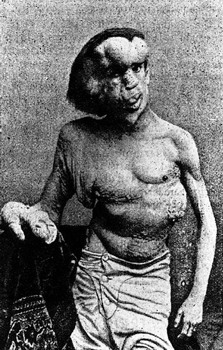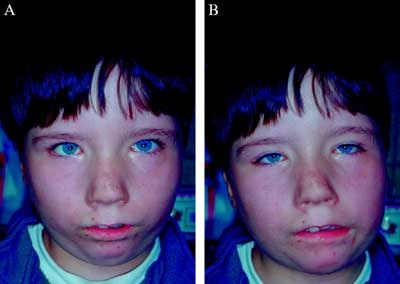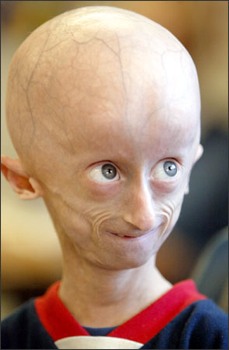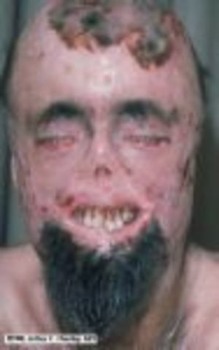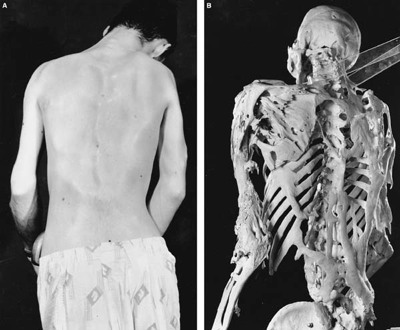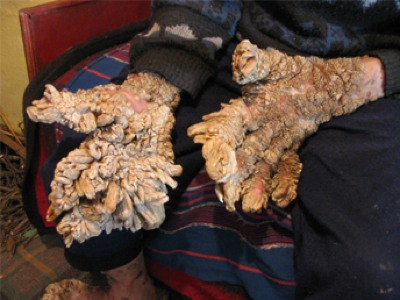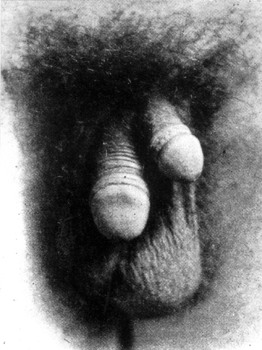 Weird Stuff
Weird Stuff  Weird Stuff
Weird Stuff  Mysteries
Mysteries 10 Tragic Disappearances and Deaths in Joshua Tree National Park
 History
History 10 Ways Childhood Really Sucked in the Old West
 Music
Music 10 Name Origins of Famous Bands from the 1990s
 Religion
Religion 10 Biggest Turnarounds by the Catholic Church
 Weird Stuff
Weird Stuff 10 Unbelievable Times Laws Had Unintended Consequences
 Humans
Humans Ten Historic Women Who Deserve Way More Credit Than They Got
 Movies and TV
Movies and TV 10 Films That Spawned Major Lawsuits
 History
History Ten Times Towns Were Wiped Off the Face of the Earth
 Creepy
Creepy 10 of the Most Disturbingly Haunted Public Houses in the UK
 Weird Stuff
Weird Stuff 10 Niche Subcultures That Are More Popular Than You Might Think
 Mysteries
Mysteries 10 Tragic Disappearances and Deaths in Joshua Tree National Park
 History
History 10 Ways Childhood Really Sucked in the Old West
Who's Behind Listverse?

Jamie Frater
Head Editor
Jamie founded Listverse due to an insatiable desire to share fascinating, obscure, and bizarre facts. He has been a guest speaker on numerous national radio and television stations and is a five time published author.
More About Us Music
Music 10 Name Origins of Famous Bands from the 1990s
 Religion
Religion 10 Biggest Turnarounds by the Catholic Church
 Weird Stuff
Weird Stuff 10 Unbelievable Times Laws Had Unintended Consequences
 Humans
Humans Ten Historic Women Who Deserve Way More Credit Than They Got
 Movies and TV
Movies and TV 10 Films That Spawned Major Lawsuits
 History
History Ten Times Towns Were Wiped Off the Face of the Earth
 Creepy
Creepy 10 of the Most Disturbingly Haunted Public Houses in the UK
Top 10 Bizarre Medical Anomalies
[WARNING: some images and content may disturb and are not work safe.] Gone are the days of sideshows displaying freaks of nature, but the diseases that caused these so-called “freaks” are still with us. Political correctness has made it impolite to display the sufferers of these illnesses, so we are left with the Internet – the last resort of those with a fascinating for the bizarre. This list looks at some of the most unusual (and sometimes horrifying) anomalies of medical science.
10 Diprosopus
Diprospus (sometimes called Craniofacial duplication) is a rare disorder in which the face is duplicated on the head (as in the picture above). This is not to be confused with fetus in fetu (item 9) which is a joining of two separate fetuses; diprosopus is caused by a protein called (believe it or not) “sonic hedgehog homolog”. The odd name is due to a controversial tradition in molecular biology to use unusual names for genes. The protein determines the makeup of the face, and when there is too much of it, you get a second face in a mirror image. If you do not have enough of the protein, you can end up with underdeveloped facial features. Children with this defect are normally stillborn, but a young girl, Lali Singh, born in 2008 survived for 2 full months before dying of a heart attack.
The unexpected, the bizarre, and the gruesome – it’s all in A Cabinet of Medical Curiosities: A Compendium of the Odd, the Bizarre, and the Unexpected at Amazon.com!
9 Fetus In Fetu
The man pictured above is Sanju Bhagat aged 36 from India. He is fully pregnant with his own twin. Because Sanju lacked a placenta, the fetus inside him attached directly to his blood supply. Doctors delivered the twin which was severely malformed and did not survive. Fetus in fetu is an extremely rare disorder in which a twin somehow becomes connected (internally or partly externally) to its twin while still in the womb. In some cases the fetus in fetu will remain inside the host twin unknown until it begins to cause problems. In more common cases, the signs are visible from the outset and are often initially confused with cysts or cancers. In a recent case a 7 year old boy was discovered to be carrying his twin when his parents noticed that something was moving in his stomach. You can read more about that here.
8 Proteus Syndrome
The Elephant Man (Joseph Merrick) is probably the most famous case of Proteus Syndrome. The disease causes excessive bone growth, excessive skin growth, and frequently comes with tumors. Only 200 cases have been confirmed worldwide since the disease was officially discovered in 1979. It is possible to have a minor form of this disease which can go undiagnosed. The case of the Elephant Man has been the sole reason that this disease is so widely known. Sufferers have normal brain function and intelligence.
7Möbius Syndrome
Möbius Syndrome is a rare disorder in which the facial muscles are paralyzed. In most cases the eyes are also unable to move from side to side. The disease prevents a sufferer from having any facial expressions, which can make them appear to be uninterested or “dull” – sometimes leading to people thinking they are rude. Sufferers have completely normal mental development. The causes are not fully understood and there is no treatment aside from addressing the symptoms (such as an inability to feed as a baby).
A man who’s turning into a tree and a girl with inside-out organs – get all the bizarre true tales in Medical Mysteries: From the Bizarre to the Deadly at Amazon.com!
6 Hutchinson-Gilford Progeria Syndrome
Hutchinson-Gilford Progeria syndrome (progeria) will be familiar to people old enough to remember the television program That’s Incredible from the ’80s in which a young sufferer of the disorder appeared. The disease causes premature aging – so rapidly that a young child can look like a very old man (or, if I may be so callous as to point out the obvious, an alien – as in the photograph above). The disease is especially interesting for scientists as it may lend clues to the natural aging process in man. The disease is caused by a genetic mutation, and does not pass from parent to child. There is no known cure, and most children with the disease do not live beyond the age of thirteen – usually dying of stroke or heart attack (diseases usually associated with old age).
5 Cutaneous Porphyria
Cutaneous porphyria is a disorder that causes blisters, excess hair, swelling, and necrosis of the skin. It can cause red colored teeth and fingernails, and after exposure to sun, urine can turn purple, pink, brown, or black. The disease is thought to be connected to the many werewolf and vampire legends of the past, where a sufferer (who would have lived apart from society) might have been confused for a monster. The disease is part of the more general group of disorders called porphyrias which cover a range of mental and physical disorders due to the overproduction of certain enzymes in the body. The disease gets its name from the Greek word “porphura” which means “purple pigment”.
4 Elephantiasis
First off, note the spelling – it is Elephant-iasis not Elephant-itis as many people wrongly think. Elephantiasis is a thickening of the skin (as opposed to proteus syndrome which is a thickening of the bones as well as the skin). Unfortunately, this is a disease that any one of us can get as it is caused by parasitic worms passed on through mosquito bites. It is, consequently, not uncommon in tropical regions and Africa. A slightly different form of the disease is caused through contact with certain types of soil. In some parts of Ethiopa, up to 6% of the population suffers from the disorder. It is one of the most common disabilities in the world. Efforts to eradicate the disease are well underway and it is hoped that it will be successfully relegated to the annals of history by 2020.
3 Fibrodysplasia Ossificans Progressiva
Fibrodysplasia Ossificans Progressiva (FOP for short) is a very rare disease that causes parts of the body (muscles, tendons, and ligaments) to turn to bone when they are damaged. This can often cause damaged joints to fuse together, preventing movement. Unfortunately surgical removal of the bone growths is ineffective as the body “heals” itself by recreating the removed bone. To make matters worse, the disease is so rare that it is often misdiagnosed as cancer, leading doctors to perform biopsies which can spark off worse growth of these bone-like lumps. The most famous case is Harry Eastlack whose body was so ossified by his death that he could only move his lips. His skeleton is now on display at the Mütter Museum. There is no cure.
2 Lewandowsky-Lutz Dysplasia
Lewandowsky-Lutz Dysplasia (also known as Epidermodysplasia verruciformis) is an extremely rare inheritable disorder in which warts form on the skin. It normally affects the hands and feet and while it can start in middle ages, it normally begins between the ages of one and twenty. There is no known effective treatment for the disease though surgery can be used to remove the warts. Unfortunately, after surgery the warts begin to return and it is estimated that a sufferer would need at least two surgeries per year to remove them each time they grow back. In 2007 a sufferer had surgery for the disease and thirteen pounds (5.8 kilos) of warts were removed. 95% of the warts were removed.
10 Diphallia
Diphallia (also known as Penile Duplication) is a condition in which a male is born with two penises. It is a rare disorder with only 1,000 cases recorded. Sufferers are also at a higher risk of spina bifida than men with one penis. A person with diphallia can urinate from one or both of his penises. In most cases, both penises are side by side and the same size, but occasionally one smaller penis will sit atop another larger one. One in 5.5 million men in the United States have two penises.


